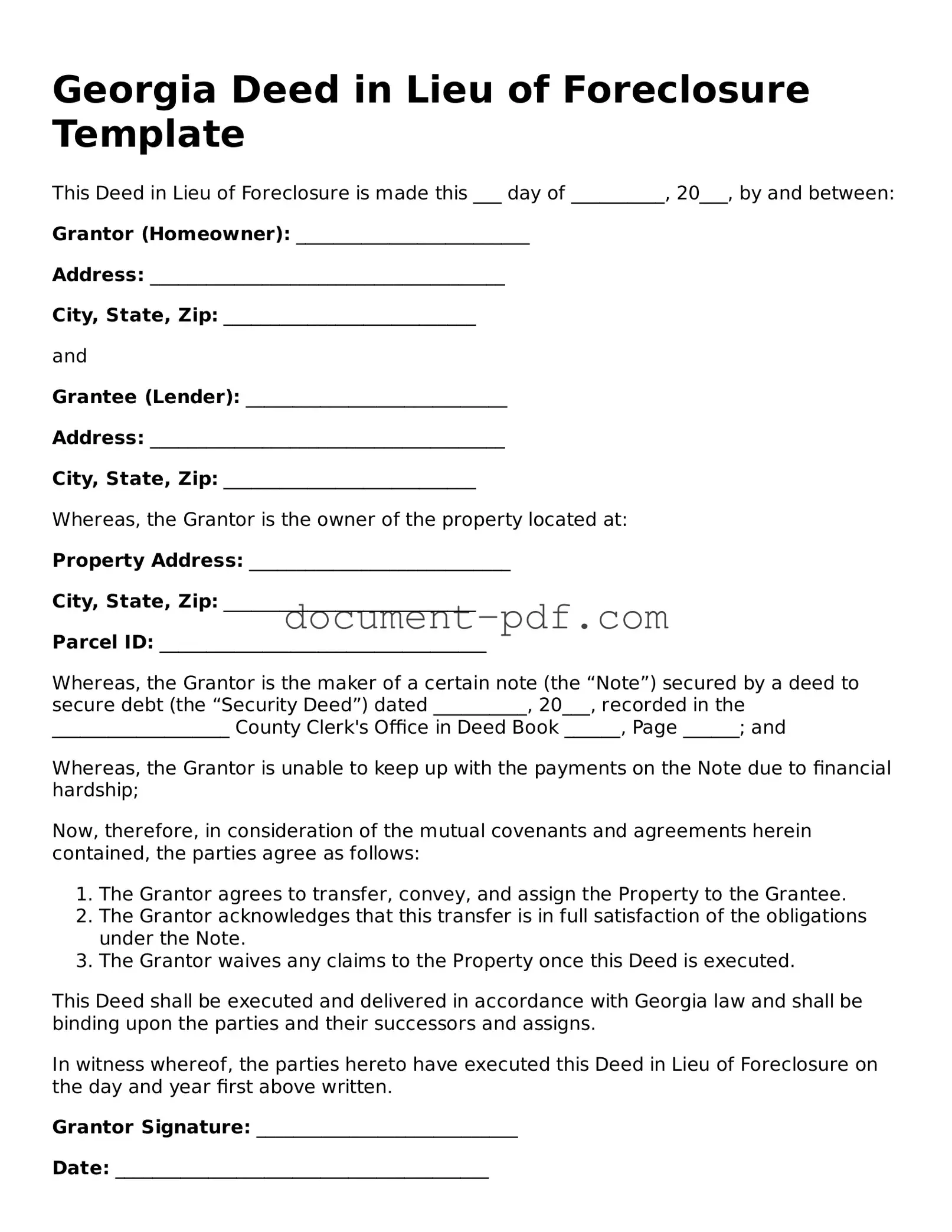Georgia Deed in Lieu of Foreclosure Template
This Deed in Lieu of Foreclosure is made this ___ day of __________, 20___, by and between:
Grantor (Homeowner): _________________________
Address: ______________________________________
City, State, Zip: ___________________________
and
Grantee (Lender): ____________________________
Address: ______________________________________
City, State, Zip: ___________________________
Whereas, the Grantor is the owner of the property located at:
Property Address: ____________________________
City, State, Zip: ___________________________
Parcel ID: ___________________________________
Whereas, the Grantor is the maker of a certain note (the “Note”) secured by a deed to secure debt (the “Security Deed”) dated __________, 20___, recorded in the ___________________ County Clerk's Office in Deed Book ______, Page ______; and
Whereas, the Grantor is unable to keep up with the payments on the Note due to financial hardship;
Now, therefore, in consideration of the mutual covenants and agreements herein contained, the parties agree as follows:
- The Grantor agrees to transfer, convey, and assign the Property to the Grantee.
- The Grantor acknowledges that this transfer is in full satisfaction of the obligations under the Note.
- The Grantor waives any claims to the Property once this Deed is executed.
This Deed shall be executed and delivered in accordance with Georgia law and shall be binding upon the parties and their successors and assigns.
In witness whereof, the parties hereto have executed this Deed in Lieu of Foreclosure on the day and year first above written.
Grantor Signature: ____________________________
Date: ________________________________________
Grantee Signature: ____________________________
Date: ________________________________________
This document may not cover all aspects of the Deed in Lieu of Foreclosure process. Consulting with a legal professional is advised to ensure compliance with all local and federal laws.
